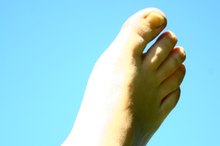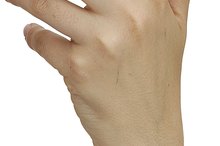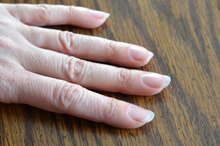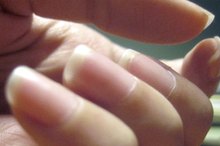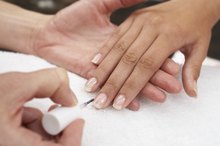What does fact checked mean?
At Healthfully, we strive to deliver objective content that is accurate and up-to-date. Our team periodically reviews articles in order to ensure content quality. The sources cited below consist of evidence from peer-reviewed journals, prominent medical organizations, academic associations, and government data.
The information contained on this site is for informational purposes only, and should not be used as a substitute for the advice of a professional health care provider. Please check with the appropriate physician regarding health questions and concerns. Although we strive to deliver accurate and up-to-date information, no guarantee to that effect is made.
How to Protect Nails From Chlorinated Pool Water
Like your skin, your toenails and fingernails can take a beating if you spend a lot of time in a chlorinated pool. Nails that have spent too much time in chlorinated water can break easily and become dry and cracked. However, you can take several steps to avoid these problems. If you've tried them all and are still having issues, it could be a sign of a more serious problem, and you should consult your doctor.
Apply a nail-hardening polish to the nails. According to the Mayo Clinic, you should avoid harsh chemicals such as formaldehyde and toluenesulfonamide, since they can cause more irritation of the nails. You can also apply a coat of clear polish over the nail hardener to keep more moisture in your nails. The Mayo Clinic recommends removing the polish once a week and starting over.
How to Make My Nails Grow Faster & Stronger
Learn More
Moisturize your nails after the chlorine exposure. Since the problems associated with chlorine exposure often have to do with dryness, adding moisture can help. Use a natural lotion containing lanolin before bedtime, and then cover your hands with gloves to trap the moisture.
Read more about the effects of swimming on swimmers hair and skin.
Hydrate your body. When your skin or nails are dry, don't overlook the mantra of "treating from the inside out," and drink lots of water. Staying well-hydrated has many positive results--having better skin and nails being two of them.
Toenail Cuticle Problems
Learn More
Take supplements. The Mayo Clinic recommends taking 2.5 milligrams of biotin each day to keep your nails healthy 1. If you have any health issues, consult your doctor before starting any new supplement regimen.
Read more about the long terms of effects of chlorinated water on the skin.
Related Articles
References
Writer Bio
Nicole Vulcan has been a journalist since 1997, covering parenting and fitness for The Oregonian, careers for CareerAddict, and travel, gardening and fitness for Black Hills Woman and other publications. Vulcan holds a Bachelor of Arts in English and journalism from the University of Minnesota. She's also a lifelong athlete and is pursuing certification as a personal trainer.

